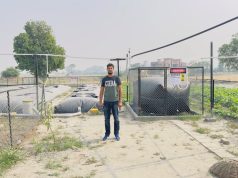Rainwater harvesting essentially means collecting rainwater on the roofs of building and storing it underground for later use. Town planners and civic authorities in many States in India have made bylaws making rainwater harvesting compulsory in all new structures. In 2003 Tamil Nadu had made rainwater harvesting mandatory for all the buildings, both public and private, in the state. As a result, Chennai saw a 50 percent rise in water level in five years and the water quality significantly improved.
However, such examples are more exception than rule. The haphazard and unscientific method of construction in our urban and rural areas leaves very little scope for any meaningful water harvesting. Additionally, water consumption and wastage is reaching alarming proportions in our modern day life.
A quick peek into history and we find that even our ancient religious texts and epics give a good insight into the water storage and conservation systems that prevailed in those days. The Indus Valley Civilization, that flourished along the banks of the river Indus and other parts of western and northern India about 5,000 years ago, had one of the most sophisticated urban water supply and sewage systems in the world. That the people were aware of the need for water harvesting and conservation can be seen from the layout of the drains and storage tanks seen at the ruins both at Mohenjodaro and Harappa. Another very good example is the well-planned city of Dholavira, on Khadir Bet, a low plateau in the Rann in Gujarat. One of the oldest water harvesting systems is found about 130 km from Pune along Naneghat in the Western Ghats where a large number of water tanks were carved out in the rocks to provide drinking water to traders who travelled along this ancient route. Each fort in the area had its own water harvesting and storage system in the form of rock-cut cisterns, ponds, tanks and wells that are still in use today. A large number of forts like Raigad had tanks that supplied water. In areas of Western Rajasthan too, houses were built with each roof top having water harvesting system. This was supplemented with elaborate taankas, bunds and chaukas.
The current situation demands much to be done. With large-scale extraction of groundwater which itself is a result of the widening gap between the demand and supply of water the quality of underground water is also deteriorating and in several places it has been found to be unfit for human consumption. Rain Water Harvesting offers a solution that needs urgent and stringent implementation with laws at the national level, making rain water harvesting mandatory in all built up areas. Even while it can be taken up as a National mission, NGOs can play a stellar role in spreading awareness, providing expertise and much needed funds. And Corporate houses can take it up as an eligible wp activity as per Schedule VII item (iv) for ensuring environmental sustainability, ecological balance, protection of flora and fauna, conservation of natural resources and maintaining quality of soil, air and water. Any takers then?














